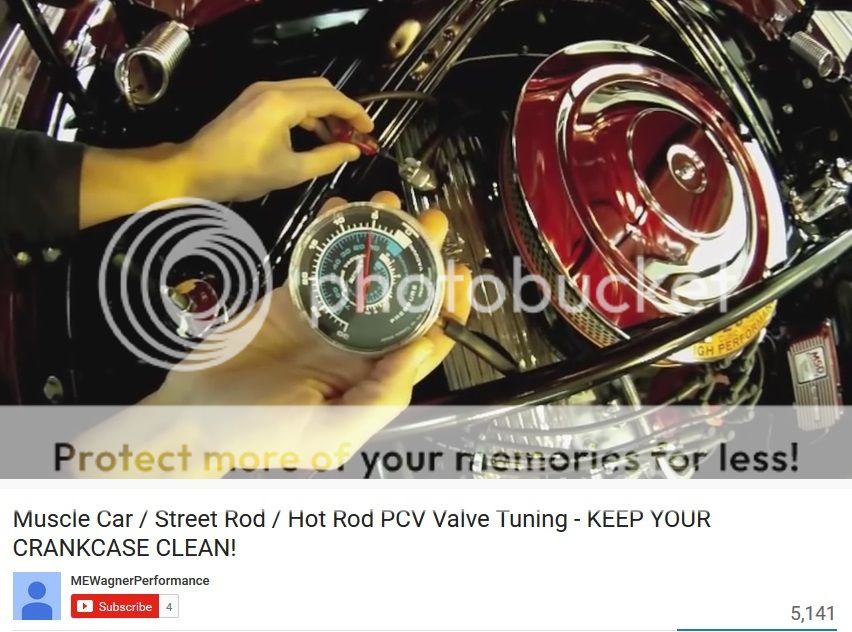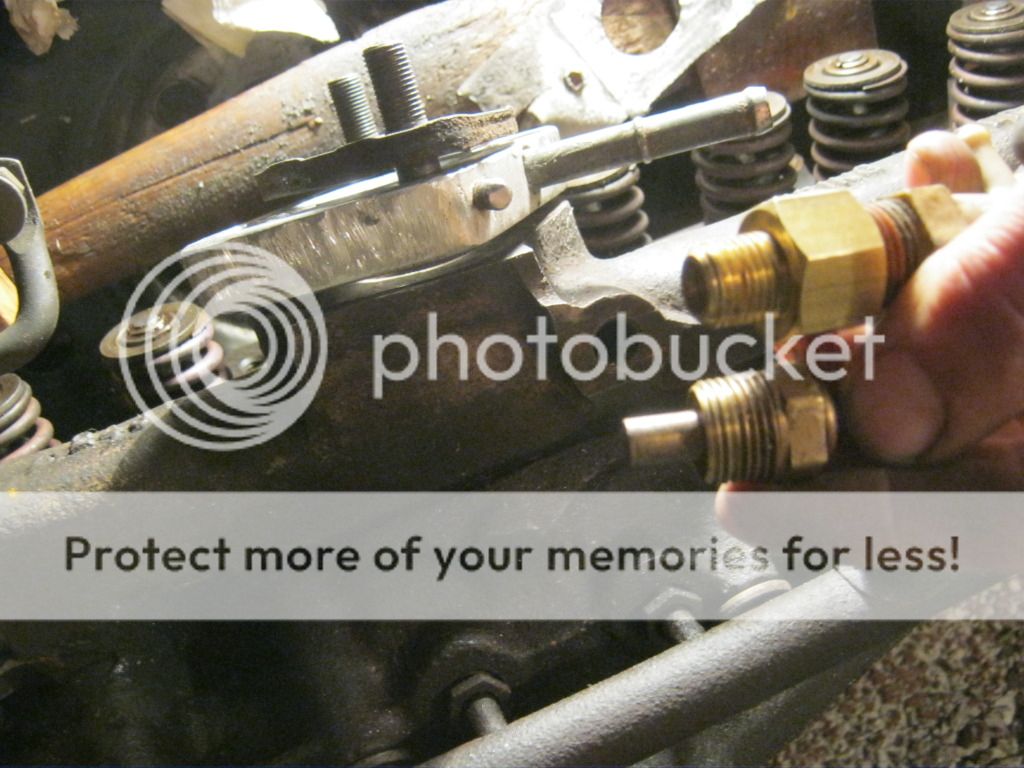Follow Bills old 2-BBL 500 cfm carb set up. The position of the manfiold take off on the 1980-1983 log head he uses are simply switched from 1-2-3 to 4-5-6 on the 2V intake manifold. It was set up that way by
Bill Santuccione (and others) in 1969 when doing the development work in the Ford Prototype Engine Test Laboratories in Geelong for the XY Falcons Ford M code 250 head that came out in 1971.
https://www.fordgtholot6.com/bill-santuch
The solution to good vacuum line arrangements is from Bob Seeger and the Silver Bullet Band. Knowing what to leave in, what to leave out, So your not Runnin' Against the Wind.
PCV was stock as a requirement from the 1965 US clean Air Act. They aren't well described.
The early system from 1968 to 1972 kept the stock vented filler cap.
For 1973, the normal Cleveland style screw on oil filler cap went on the front for two years,
then when to the back of the rocker cover for the 1976 era cars...it was too tall to fit under the 1978 -1983 Foxes, so it was shifted from forward to aft, and the one, 2 or 3 peg PCV was fitted in the front.
A really good way of keeping the early open filler cap is the by running the 3.8 Essex V6 filler T cap found on EFi 3.8's.1984-1986.
The rocker cover got a baffle to stop oiling up the PCV system.
The vacuum tree for all non log head cross flows and the ealy non cross flow 2v head which Mike W coped to make the Classic Inlines head is the same as the 3.3/4.1 liter 1-bbl 1976-1982 Ford iron and alloy head Cross flow air cleaner engines used in Aussie Ford Transits, F100's, Falcons Cortinas, Fairmont, some later Fairlanes.
The IMCO system was universal and dead simple.
EGR wasn't used on the F100'S and Transit Vans, those engines were de-emissioned New Zealand specfication with an EGR block-off
The switch from spark to manifold ported vaccum for ignition is tied up to the carbs vaccum fittings, and Vacuum Diverter valves and devices with other names govern all that stuff. The IATC (Inlet Air Temperature Control) is controlled by a little one way valve which stops the heat flap staying shut under wide open throttle. That is important.
Since everything is
so inter-related, a quick "squiz" into the SWOT analysis of the three Ford systems follows:-
The other Pollution systems are via three Ford Ways.
The No 1.
IMCO way, the 1968 to 1977 era Ford Emissions hookups, which moved away from 2100 Autolites to 2150 Motorcrafts, and got increasingly bogged down with extra stuff. Autolite new ignition systems with proper vacuum advance that eventually became the Electronic Duraspark I, II, or even III.
With that, there was an added on system additional to it, the The Air pump emissions engines. These were the
No 2.
the Thermactor Engines, the California spec 1969 Boss 302's, all the California and High Altitude Colorado spec engines.
Then the third wave, No 3
the Catalyzed US unleaded 1975 on wards engines that for US 1980 Federal Emissions, went a step further, with bowl vent carb engines with considerable extra carb systems. Or even like the Chev Vega Cosworth or the Caddy Seville's or Lincolns...Throttle Body EFi parts, which made the emissions parts intensely integrated.
The Port Injection era resulted in removal of a heck of a lot of other emissions junk, especially US EFi engines. But the key parts,
the heat stove Thermatic stoves, and Load Control valves
the PCV,
the one, two and three peg trees to the thermostat or the manifold vacuum, and
the four kinds of Ported, Manifold, Spark or EGR porting vaccum sources make your life a living hell, especially if a Bowl Vent solenoid is present.
IMCO spec Autolites 1100, 1101, 2100 and the later Motorcraft 2150's have various other bits to them, and rather than run from the extra systems, check the condition of the parts, and use them if they aren't rusted out or broken.
You need the
Jahearne or
Frankenstang's D5DF-9600-A 1975 style YFA Carter Air cleaner with a heat stove
Ford had planned to use the 170 cubic inch 2.8 liter Mustang/Capri/Pinto/Ranger air cleaner on the 1978 Fox Fairmont and Zephyr, in fact, the 2V engine was reported as fact for the plice spec cars. However, the 2-bbl 2305 Holley or VV2700 carb was not sanctioned for the planned M code 200 engine, but the 1974-1983 air cleaner to this day still carries a dual DADA-9600-A
200/2.8 part number, and fits the 2150 Motorcraft 2-BBL, 5200 2-bbl or VV2700 Variable Venturi carb with a special offset part.
It has the PCV and TVS switch to control the opening of the heated exhaust stove.
The other 12 devices you
might find for 1968 to 1973's are the same as used on 1976 to 1985 Fords, as they copied US 1973 Leaded fuel emission laws but with higher compression ratios for 97 octane leaded gas:-
The Cortina had the Pinto 2000 engine as a base engine, with the 3.3 and 4.1 liter Cross flows as the top dog option, much like the later Fox Mustang. 2.3/2.8/3.3/4.2 then 5.0 for yours.
Items 1 to 12 include some useless Automatic and Manual Pinto 2000 stuff that never really worked well, but a good Pinto engine could make a lot of power while sucking a lot of gas, and the fuel consumption wasn't from the emissions gear.










99 IATC (Inlet Air Temperature Control)--->Not Needed, but I 'd personally use it
100 3 port Vac Switch for Spark to Manifold vacuum--->Not Needed, but I 'd personally use it
102 2 Port PVS & Dual Vac Distributor--->Not Needed
103 Spark to Manifold Vac Port Switchover detail--->Not Needed, but I 'd personally use it
105 Vaccum Delay Valve--->Not Needed, but I 'd personally use it
106 Air Cleaner Intake Vac Controls--->Not Needed, but I 'd personally use it
107 EGR--->Not Needed, but I 'd personally use it
108 IMCO Spec Carb--->Not Needed, but I 'd personally use it
109 Solenoid Throttle Positioner--->Not Needed, but I 'd personally use it
110 Evaporative Emission System--->Not Needed
































